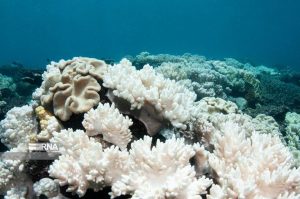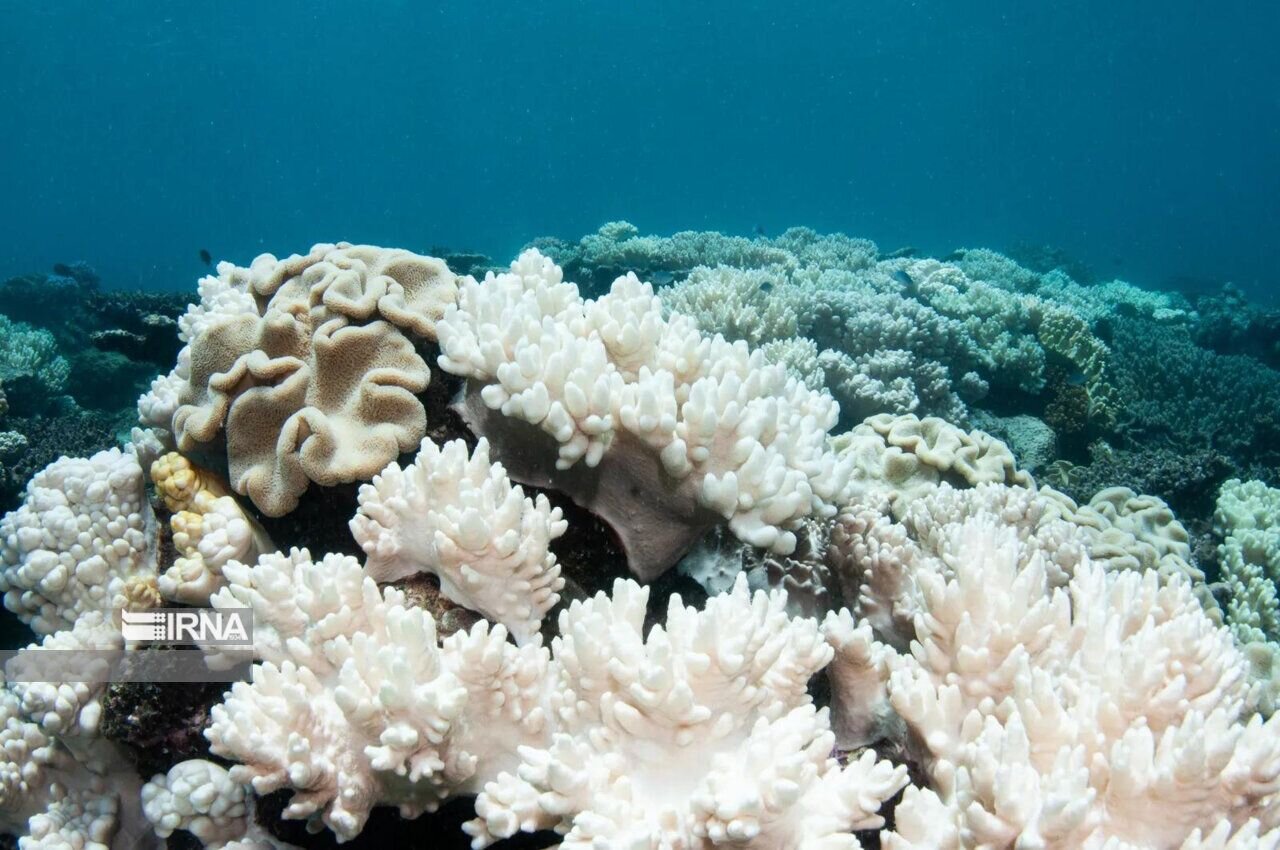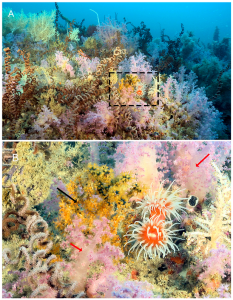Explore the current health of coral reefs in the Persian Gulf through a scientific lens. Learn how climate change, oil spills, and human activity are affecting these vital marine ecosystems and what’s being done to protect them.

Climate change, pollution threat Persian Gulf coral reefs, Credit: https://www.tehrantimes.com/news/497776/Climate-change-pollution-threat-Persian-Gulf-coral-reefs
Why Coral Reef Health in the Persian Gulf Matters for Maritime Operations and Ecology
The Persian Gulf may not be the first place that comes to mind when we think of coral reefs. Its waters are shallow, salty, and hot—conditions that many coral species worldwide would struggle to survive. And yet, coral reefs in this region do exist, and remarkably, they have adapted to one of the harshest marine environments on Earth.
From the coastlines of Iran and Bahrain to the shallows of the UAE and Qatar, these resilient coral ecosystems play a critical role in regional biodiversity, fisheries, shoreline protection, and—indirectly—even port infrastructure stability. However, this resilience is being pushed to its limit by a combination of rising sea temperatures, frequent oil spills, sedimentation from dredging, and coastal development.
Understanding the health of coral reefs in the Persian Gulf is no longer just a scientific curiosity. It has become a strategic concern for maritime professionals, port authorities, environmental regulators, and coastal economies.
The Scientific Uniqueness of Persian Gulf Coral Reefs
Adapting to Extremes
The Persian Gulf has some of the highest recorded summer sea surface temperatures in the world, reaching up to 36°C (97°F) in some areas. Salinity levels are also much higher than the global average due to high evaporation and limited freshwater inflow.
Yet, coral species like Platygyra daedalea and Porites lutea have adapted to this “hotspot of tolerance,” making them of high interest to marine biologists studying coral resilience in a warming world.
According to the Journal of Marine Science and Engineering (2023), Gulf corals exhibit unique genetic adaptations that allow them to survive temperature spikes 1–2°C higher than their Indo-Pacific counterparts. This makes the region potentially important for restoration and transplantation projects globally.
Shallow, Fast-Changing Ecosystems
Because the Gulf is shallow (average depth ~35m), coral reefs here are easily affected by surface events—whether it’s a heatwave, algal bloom, oil spill, or dredging activity. Their recovery time is slower, and any human impact is quickly felt at the ecological level.
In a way, Persian Gulf coral reefs serve as marine early-warning systems, indicating environmental stressors that could later affect larger ocean systems.
Key Stressors Affecting Coral Reefs in the Persian Gulf
Rising Sea Temperatures and Coral Bleaching
Bleaching events—where corals expel their symbiotic algae due to heat stress—have become more frequent and intense. In the 2017 marine heatwave, coral cover in certain parts of Bahrain and Qatar dropped by more than 40%, according to research published in the Marine Pollution Bulletin.
The International Union for Conservation of Nature (IUCN) has warned that if current trends continue, coral mortality in the Gulf could reach 70–90% by 2040, unless global warming is curtailed to below 1.5°C.
Oil Spills and Chronic Pollution
While coral reefs are resilient to some temperature and salinity stress, hydrocarbon pollution is far more damaging. Oil smothers coral polyps, blocks sunlight, and poisons the reef ecosystem.
According to the Regional Organization for the Protection of the Marine Environment (ROPME), chronic pollution—particularly near high-traffic tanker routes—has reduced coral reproduction and increased susceptibility to disease.
The 1991 Gulf War oil spill, often cited as the largest in history, still affects reef recovery in parts of Kuwait and Saudi Arabia, as reported by the UNEP and NOAA in follow-up studies.
Coastal Development and Sedimentation
Massive infrastructure projects, from artificial islands to port expansions, result in increased sedimentation, which buries corals and blocks photosynthesis.
Projects such as the Palm Islands in Dubai and Hamad Port in Qatar have faced scrutiny from marine ecologists. A 2022 study in Ocean Engineering documented that nearby reefs experienced a 60% decline in visibility and a 30% loss of coral cover within just two years of major dredging activity.
Desalination and Thermal Discharges
The Gulf is home to more than 60% of the world’s desalination capacity, particularly in Saudi Arabia, UAE, and Kuwait. These plants release hot brine back into the sea, altering local temperature and salinity gradients.
A study by the King Abdullah University of Science and Technology (KAUST) found that reefs near desalination outlets experience micro-scale thermal pollution that disrupts coral spawning cycles and leads to localized bleaching.
(A) High-density coverage of the habitat on a macro- and microscale (depth of 30–40 m), with the substrate mainly covered by octocorals and antipatharians. (B) Nephtheids (red arrow), Astrogorgia (black arrow), antipatharians, etc.; the solitary scleractinian corals are two Balanophyllia sp. (orange) and one Paracyathus rotundatus (black center). (Photos: A. J. Abdipour)., Credit: https://doi.org/10.3390/d15060779
Case Studies: Coral Resilience and Collapse
Bahrain’s Coral Nursery Initiative
Bahrain has launched a coral farming project in partnership with The Supreme Council for Environment and local NGOs. Using coral gardening and reef balls, the initiative has successfully transplanted over 2,000 coral fragments near Fasht Al Adhm reef.
Despite high summer temperatures, monitoring by the University of Bahrain showed a 70% survival rate, suggesting that human-assisted restoration is viable even under harsh conditions.
Iran’s Kish Island Reef Decline
In contrast, the coral reefs near Kish Island, once a tourism hotspot, have declined significantly. Satellite data from MarineTraffic and NASA’s MODIS show consistent sediment plumes from port activities. Local surveys (2021) recorded less than 10% live coral cover, down from over 50% in the early 2000s.
Challenges and Solutions in Coral Reef Protection
Limited Marine Protected Areas (MPAs)
While international guidelines recommend protecting at least 10% of marine ecosystems, most Gulf states fall short. According to UNEP-WCMC, only 3–4% of coral-bearing regions in the Persian Gulf fall within legal MPAs.
Weak Enforcement of Pollution Laws
Even when environmental regulations exist, enforcement is often weak. Oil discharge from vessels, pipeline leaks, and thermal effluent releases are rarely prosecuted or fully cleaned up.
The IMO’s MARPOL Annex I and the OPRC Convention (Oil Pollution Preparedness, Response and Cooperation) are ratified by most Gulf countries, but reporting and compliance remain inconsistent, as noted in the Port State Control reports from the Paris MoU and Indian Ocean MoU.
Technological and Scientific Solutions
Emerging solutions include:
-
Heat-resistant coral strains developed by KAUST and UAE University.
-
Underwater drones to map reef health in real time (trialed in Abu Dhabi).
-
AI-driven prediction models for coral bleaching using satellite sea temperature data, developed by Thetius and Inmarsat.
Future Outlook: Can Persian Gulf Corals Survive the Century?
Despite the risks, scientists are cautiously optimistic. The Persian Gulf’s coral reefs have shown a genetic and physiological resilience that makes them unique globally.
However, this “super coral” narrative must be approached carefully. Resilience does not mean invulnerability. Without serious mitigation efforts—both locally and globally—these reefs may not survive beyond the next few decades.
But with coordinated regional action, technological innovation, and better maritime enforcement, the Persian Gulf could become a global case study for coral reef adaptation and conservation in extreme marine environments.
Frequently Asked Questions (FAQ)
Are there coral reefs in the Persian Gulf?
Yes. Despite harsh conditions, several coral species thrive along the coasts of UAE, Bahrain, Qatar, Iran, and Saudi Arabia.
Why are Persian Gulf corals unique?
They are genetically adapted to extreme heat and salinity, making them valuable for studying climate resilience.
What are the main threats to these reefs?
Rising sea temperatures, oil spills, sedimentation from dredging, coastal development, and desalination brine discharge.
How much coral has been lost in recent decades?
Some regions, like Kish Island, have seen over 80% decline in coral cover since the early 2000s due to cumulative stress.
Can coral reefs be restored?
Yes. Restoration projects in Bahrain and the UAE have shown promising results using coral nurseries and reef balls.
Are international laws protecting coral reefs enforced in the Gulf?
Enforcement is uneven. Most states are signatories to MARPOL and OPRC, but compliance monitoring remains limited.
How does this affect maritime operations?
Healthy coral reefs support fisheries, stabilize shorelines near ports, and indicate broader marine ecosystem health—all crucial for long-term maritime sustainability.
Conclusion: A Fragile Fortress Beneath the Surface
The coral reefs of the Persian Gulf are more than just colorful underwater worlds. They are scientific marvels, biodiversity anchors, and environmental indicators in a region defined by climate extremes and heavy industrialization.
Their future will depend on the actions we take today—whether it’s regulating pollution, enforcing maritime laws, or supporting coral science and restoration. For professionals in the maritime world, coral health is not just an ecological concern—it’s a strategic one. The story of the Gulf’s coral reefs is a reminder that even the strongest ecosystems can break if neglected—but with care, they can also recover and lead the way.
References
-
Journal of Marine Science and Engineering. (2023). Heat Tolerance in Gulf Coral Species. Link
-
Marine Pollution Bulletin. (2022). Impacts of Oil Spills on Coral Reefs in the Persian Gulf.
-
Regional Organization for the Protection of the Marine Environment (ROPME). (2023). State of the Marine Environment Report. Link
-
United Nations Environment Programme (UNEP). (2021). Post-Gulf War Coral Recovery. Link
-
Ocean Engineering. (2022). Dredging Impacts on Gulf Coral Systems.
-
KAUST Coral Research Group. (2023). Resilient Coral Strains for Extreme Environments. Link
-
Paris MoU on Port State Control. (2024). Annual Performance Report. Link
-
Thetius. (2023). AI and Remote Monitoring for Coral Health. Link
-
Inmarsat Maritime. (2023). Digital Tools for Environmental Monitoring. Link
-
UNEP-WCMC. (2022). Marine Protected Areas Atlas. Link


